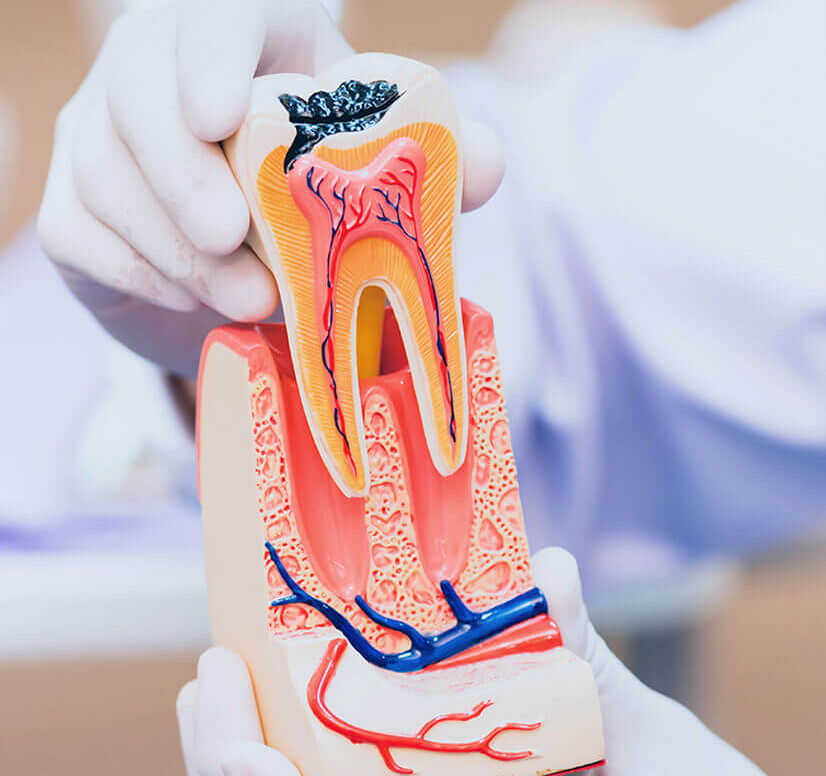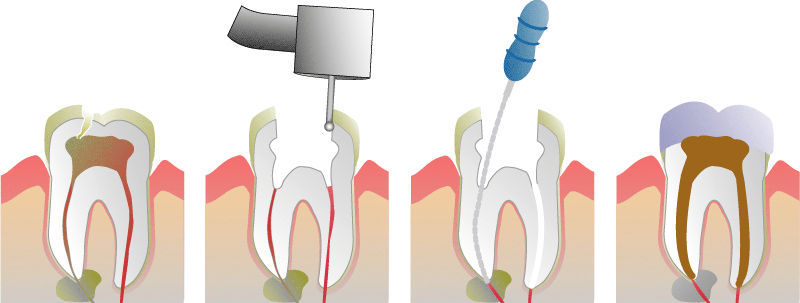
Root canal treatment
When the dental pulp (commonly known as the nerve of the tooth) becomes infected or inflamed due to deep cavities, trauma, or other causes, root canal therapy is an effective way to save the tooth. This treatment involves removing the source of infection from the pulp chamber and root canals, cleaning and disinfecting the canals, and then filling and sealing them to prevent reinfection.
A successful root canal treatment preserves the natural tooth, restores its function, and eliminates the need for extraction. After the procedure, it is usually recommended to place a dental crown to protect the tooth and extend its lifespan.

Reasons and Process of Root Canal Treatment
The dental pulp is a soft tissue inside the tooth that contains nerves, blood vessels, and connective tissue. When a tooth is affected by severe decay, trauma, cracks, or other factors, the pulp may become infected or inflamed, leading to pain, sensitivity, or swelling in the surrounding tissues. If left untreated, the infection can spread, making it impossible to save the tooth.

(1) Removing the Damaged Pulp
The dentist will first administer local anesthesia to ensure the procedure is pain-free. A small opening is then created on the surface of the tooth to access the pulp chamber, allowing the removal of the infected or necrotic pulp tissue.

(2) Cleaning and Disinfecting
After the pulp is removed, the root canals are thoroughly cleaned and disinfected to eliminate any remaining bacteria or sources of infection.

(3) Filling and Sealing
Once cleaned, the root canals are filled with a specialized root canal filling material and sealed to prevent bacteria from reinfecting the tooth.

(4) Restoring the Tooth
After root canal treatment, the tooth becomes more fragile. It is recommended to further restore the tooth, often by placing a dental crown. This protects the tooth, extends its lifespan, and improves the patient’s quality of life.


Contact us to know more about root canal treatment
